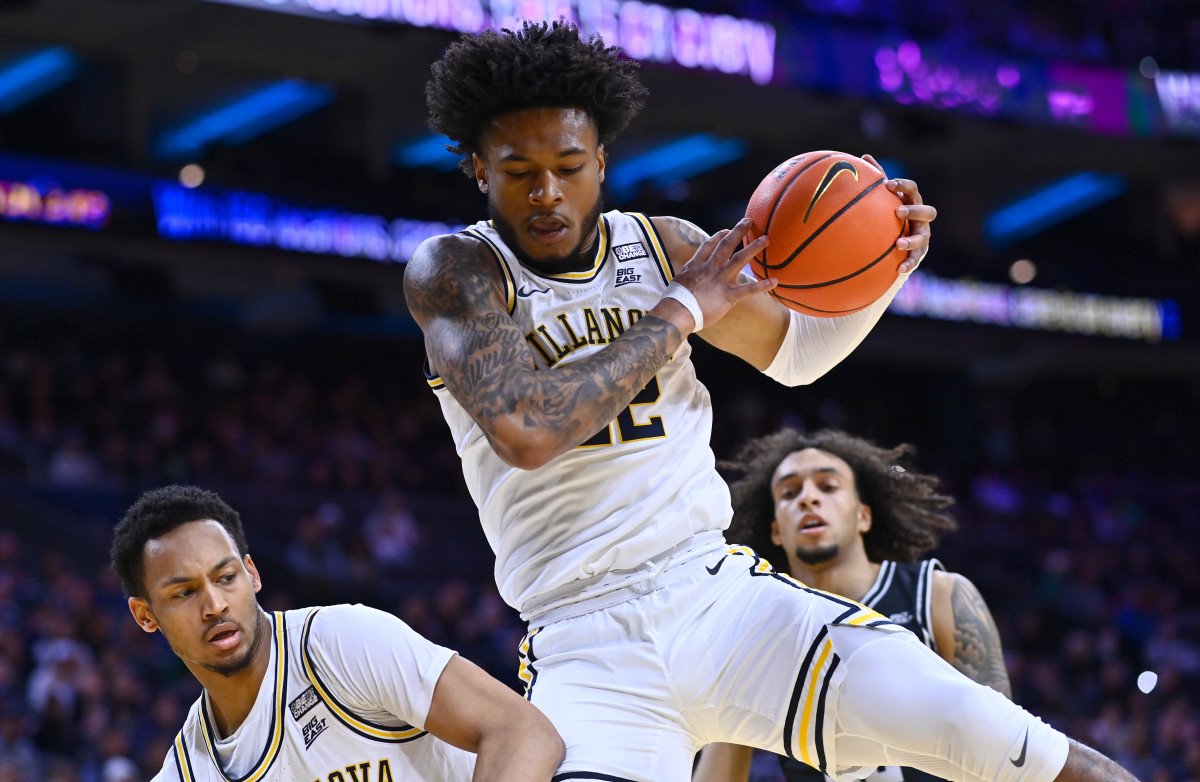NBA Draft Prospect Review: Cam Whitmore
The high-flying Freshman had no shortage of highlight slams, but Whitmore’s all-around play is what makes him a true star.
Credit: ESPN
When legendary Head Coach Jay Wright left Villanova this summer after two decades of excellence, the future of the BIG East was suddenly up for grabs. Freshman Cameron Whitmore quickly pumped the brakes when it came to counting out the Wildcats, winning the BIG East Preseason Freshman of the Year. However, Villanova’s season has been disappointing, and inconsistent trends among the team have aligned with inconsistencies in Whitmore’s numbers.
Despite these inconsistencies, the 6 '7, 220 pound freshman forward is a projected top ten selection in virtually every mock draft out there, and not just because he has the ideal NBA frame. The NCAA’s most emphatic dunker has shown promise in the open court and is quickly developing an NBA-level jumpshot.
From watching Cam Whitmore hoop, his pro-readiness becomes apparent. He’s a good cutter who has great catching ability going to the basket at full speed. He’s hard to keep up with when going downhill, and his first step is a problem for defenders. He likes operating from the corner, whether on- or off-ball, which might translate to the NBA well. It’s impossible to seal him on the baseline because of his quickness, and it is harder for help defense to emerge in that area of the halfcourt. I really admire Whitmore’s off-ball presence, especially his ability to find openings at or near the painted area.
Even though he’s not a natural ball handler (he has a very sturdy, built, Lu Dort-type frame), he can attack with both hands and can draw fouls while driving. He does get stripped a decent amount when attempting space-creating dribble moves or cutting towards the hoop.
Because he operates at such high speeds, he tends to overthrow passes and miss cutters. This also limits his playmaking in the fastbreak. Even though his numbers don’t show it (1.0 assists per 36 minutes compared to 2.5 turnovers), I see a decent playmaking ceiling for Whitmore; he’s pulled off some no-lookers and accurate strikes to cutters. He also demonstrates a solid understanding of the skip pass, which is used more often in the NBA.
When it comes to the jump shot, he has shown flashes of shooting off the dribble, and has a nice step-back jumper. He also has a crisp, quick release, which is especially useful for catch-and-shoot opportunities. The best sign for his jumper is that he has seemed to gain confidence in it as the season has progressed.
Defensively, Whitmore has a lot of natural advantages, specifically his hands, reaction time, and strength to guard all five positions. He can often be indecisive about helping or staying and can fall asleep on off-ball actions, failing to help on interior passers, but he has supreme rebounding skills and prioritizes box-out positioning over battling for rebounds. This should make his outlet pass game solid going forward, and I also like his tendency to avoid fouling, although he needs to sure up his contesting ability when it comes to verticality. A tradeoff for not committing fouls is staying grounded, which results in weaker contests.
Overall, I see Whitmore’s floor as somewhere in the realm of Markeiff Morris: he will at least be an athletic defender with a confident jumpshot that is often streaky, having hot and cold stretches from the floor. I think Whitmore's athletic floor is certainly higher than Morris's, but I think at his very least, Whitmore fits the role that young Morris was comfortable in as an off-ball contributor and defensive asset who spreads the floor and can cut and finish with force. His ceiling, to me, is a prime Jerry Stackhouse.
Whitmore shows similar skills to the multi-time All Star Stackhouse.
Credit: SLAM
After being traded to Detroit, Stackhouse entered his prime from 1999-2003. During that stretch, he averaged 22.8 points per 36 minutes, shooting 41% on 18 attempts. He also got to the line 8 times per 36 minutes and shot 84% from the stripe (free throw shooting is often an indicator of an improved jumpshot, something I will be looking for in Whitmore’s initial seasons). Stackhouse, like Whitmore, had a bad assist-to-turnover ratio even in his prime, but his value over replacement was still 12.9 (VORP is the points per 100 possessions that a player contributes ABOVE replacement level).
Like Stackhouse, my biggest limitation for Whitmore’s career is potential injuries. After 2003, Stackhouse started more than fifteen games only once over his final nine seasons due to recurring injuries, and even when he was healthy, he couldn’t create with his athleticism as effectively because of his age and injury history. Because Whitmore relies almost entirely on his athleticism, I fear the same, but having a career like Stackhouse’s still includes multiple all-star appearances and possibly an all-NBA appearance or two.
Even though I do worry about physical decline later in his career, Whitmore’s ideal NBA frame, athleticism, and decision-making as well as his natural ability to play basketball puts him anywhere between the fourth and eighth pick in my eyes.

